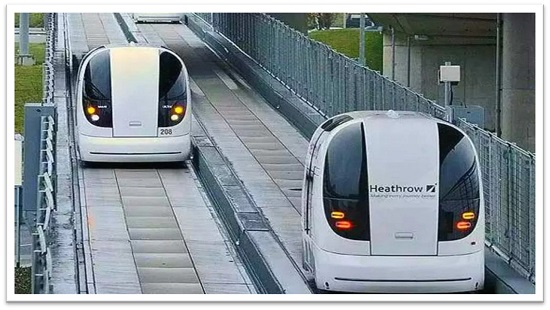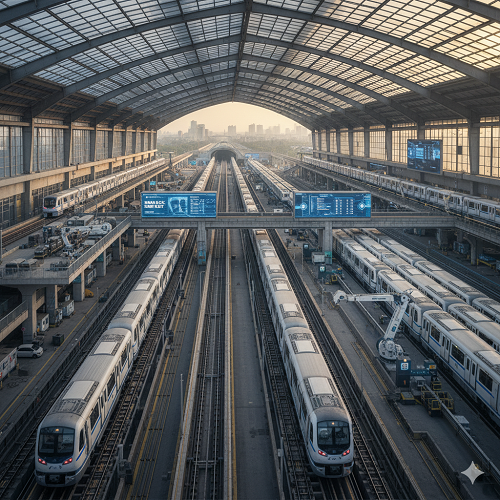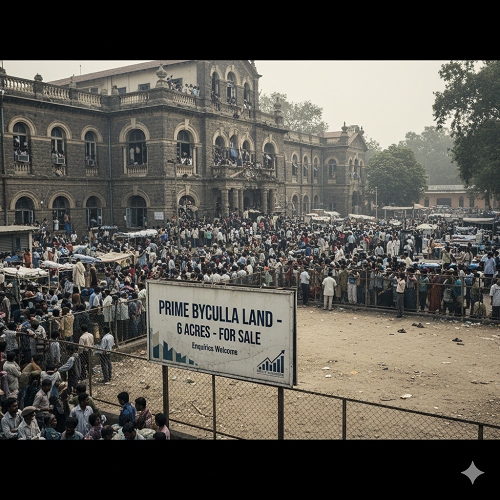
Mumbai’s Transport Revolution Begins: Maharashtra Approves India’s First Pod-Taxi Network for Thane, Navi Mumbai & Bhayandar
The Mumbai Metropolitan Region (MMR), one of India’s fastest-growing urban belts, is preparing for a transformative mobility upgrade. The Maharashtra government has officially sanctioned the country’s first pod-taxi network, connecting Thane, Navi Mumbai, and Mira-Bhayandar, an ambitious project that signals a new chapter in urban transport innovation. Designed to address escalating congestion and improve last-mile connectivity, the initiative represents a structural shift toward faster, safer, and tech-driven public transit.
The decision was solidified during a review meeting chaired by Deputy Chief Minister and Urban Development Minister Eknath Shinde. He instructed authorities to conduct comprehensive surveys across the three municipal corporations and submit a detailed report within one month. With this directive, the project has moved from concept to concrete planning, marking a significant milestone for MMR’s mobility future.
India’s First Pod-Taxi Network Gains Momentum
Pod taxis, a form of automated Personal Rapid Transit (PRT), offer small, driverless, cable-operated vehicles designed for point-to-point travel. Globally, pod systems have gained attention for their efficiency in urban corridors with rising commuter density. For the Mumbai region, where road congestion has grown sharply due to rapid expansion in housing, business hubs, and infrastructure, the adoption of such a system could bring measurable, long-term relief.
The Maharashtra government’s approval reflects both futuristic ambition and practical necessity. The Thane–Navi Mumbai–Bhayandar belt is expanding rapidly, and traditional forms of transport have struggled to keep pace. The pod-taxi network aims to bridge these gaps with a solution that is fast, automated, energy-efficient, and capable of supporting high-frequency travel without dependence on conventional road traffic.
MMRDA to Lead Implementation Under the PPP Model
The Mumbai Metropolitan Region Development Authority (MMRDA) has been designated as the primary implementing agency for the project. The system will be developed under a public-private partnership (PPP) model, allowing the government to leverage private-sector innovation, investment, and operational efficiency.
A consultant has already been appointed to carry out technical studies in all three cities. Their mandate includes route analysis, demand assessment, operational feasibility, structural design requirements, and financial viability. This step ensures that the final proposal is rooted in the region’s specific commuter patterns and infrastructure constraints.
According to officials, the initial survey has been completed, clearing the way for the next phase, inviting private companies to submit detailed technical and financial bids. This indicates strong forward movement and reflects growing confidence in market interest for pod-taxi infrastructure in India.
Designed for Seamless Integration with Metro and Road Networks
One of the most strategic aspects of the project is its integration plan. The pod-taxi network is expected to interface with existing metros, planned metro extensions, and major arterial roads. This positions the system not as a standalone innovation but as a complementary layer enhancing regional mobility.
In MMR, last-mile connectivity has consistently been a weak link in the public transport chain. While metro connectivity has expanded considerably, commuting often remains fragmented due to the distance between stations and residential or commercial zones. The pod-taxi system aims to close this gap by offering efficient, point-to-point access across short but crucial corridors.
Better connectivity along major roads and dense commercial areas could significantly reduce reliance on auto-rickshaws, taxis, and private vehicles, easing the strain on existing road infrastructure.
Residents Welcome a Long-Awaited Mobility Upgrade
The announcement has been met with optimism among residents of Thane, Navi Mumbai, and Mira-Bhayandar, regions that have experienced steady growth but continue to grapple with daily traffic bottlenecks. For many commuters, the prospect of an automated, predictable, and congestion-free transport option offers a welcome shift from long travel times and inconsistent road conditions.
Pod taxis have the potential to redefine commute patterns by introducing faster travel intervals, lower waiting times, and improved reliability. As a compact system designed for urban density, it aligns well with the needs of expanding neighbourhoods and emerging business districts across MMR.
A Forward-Looking Urban Mobility Strategy
The Thane–Navi Mumbai–Bhayandar pod-taxi project reflects a broader strategy within Maharashtra to promote technologically advanced transport solutions. It complements investments in metro lines, coastal roads, multimodal hubs, and transit-oriented development across the region.
With surveys underway, consultants appointed, and private companies being invited to bid, the project is advancing steadily into its planning phase. If executed effectively, it could become a flagship model for other Indian states seeking to adopt modern, low-impact, automated transport systems.
By aligning innovation with practicality, Maharashtra is taking a decisive step toward reshaping urban mobility. The pod-taxi network promises not only reduced travel time but also a glimpse into the future of smart, accessible, and sustainable public transportation in India’s most dynamic urban region.




